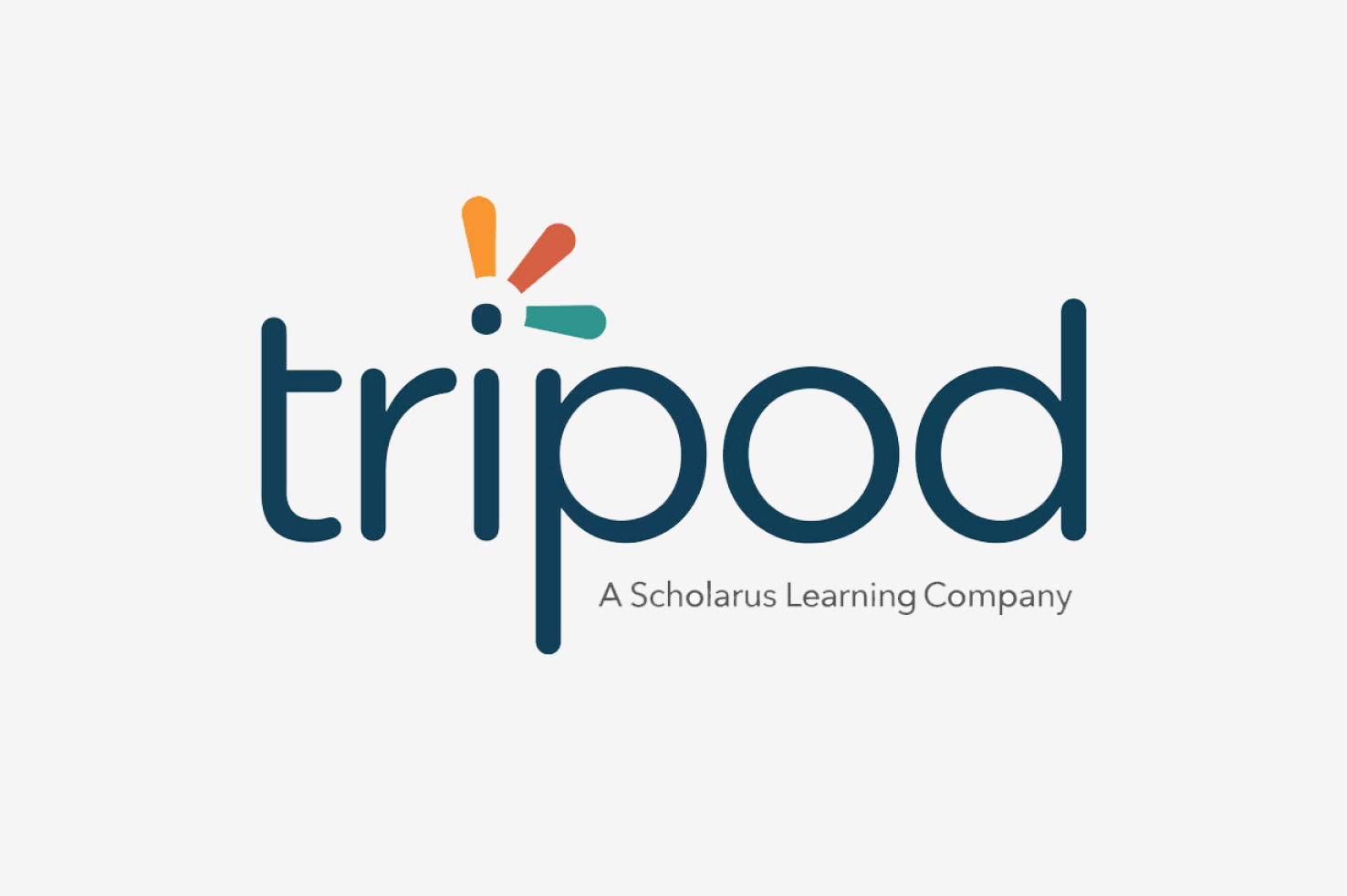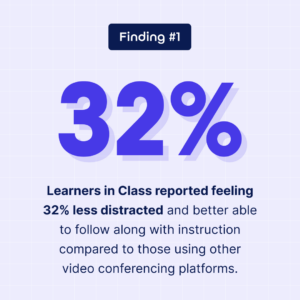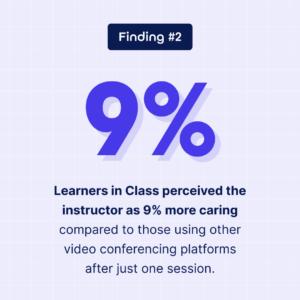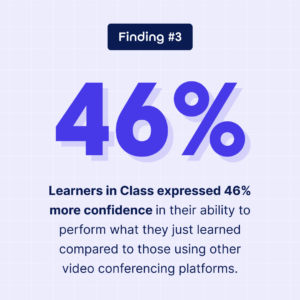
Michael Chasen is the co-founder and CEO of Class. He is an entrepreneur who has dedicated his career to improving the way people live and learn through technology. Chasen also served as co-founder and CEO of Blackboard Inc., a pioneering edtech company with software used by over 20,000 institutions and millions of instructors and learners worldwide.

Michael Chasen is the co-founder and CEO of Class. He is an entrepreneur who has dedicated his career to improving the way people live and learn through technology. Chasen also served as co-founder and CEO of Blackboard Inc., a pioneering edtech company with software used by over 20,000 institutions and millions of instructors and learners worldwide.

We founded Class with a mission to change the way the world learns. Today’s announcement is a huge step forward as we focus our efforts on the elusive challenge of engagement that has been central to in-person and online learning for decades.
Class partnered with Tripod Education Partners, a nationally recognized education survey and analytics provider, to explore how Class’s virtual classroom engages learners in comparison to traditional video or web conferencing tools. The findings provide tangible evidence that Class has a positive impact on learner engagement, as measured by improved cognitive engagement (+32%), more confidence in the material learned (+46%), and greater connection to their instructor (+9%) than traditional video conferencing.
For the purposes of Tripod’s study, learner engagement was defined as “the quantity and quality of a learner’s participation in—and interaction with—an education program, co-learners, and instructors.” Three dimensions comprise this engagement:
These definition parameters are cultivated from the following studies: Blumenfeld & Paris, 2004; Hew, 2016.
Just like in a physical classroom setting, learners are not only more receptive when they are engaged, but retention of the materials also increases with a higher level of engaged learning. This is why so many technologists and educators have pursued improving learner engagement as a key priority. In fact, based on their own research, Gallup identified “there are many reasons students drop out or don’t re-enroll. But we know that when students are engaged, they are more likely to have an emotional connection to their school, classmates, and professors. That connection is powerful: Student engagement is directly correlated with academic success, higher well-being, and positive postgraduation outcomes.”
It’s also important that engagement exists specifically in online learning environments because the modality operates intently on the learner staying focused on the screen and their coursework. This engagement can be amplified through Class by utilizing in-platform video, polls, surveys, quizzes, and more. Breakout rooms, one-on-one proctoring from instructors, and other recent technological advancements can also heighten the learner experience and act as effective engagement strategies for online learning. This transcends K-12 and higher education, extending out into learning and development for the workplace—including government agencies—as well.
The ability to lock in learner engagement and participation is crucial to upskilling and reskilling workers, as well. Lars Hyland notes, in his article for Training Industry, adds “looking at the application of new skills is far more telling of true learner engagement: Are the skills being learned then being used in an employee’s work, or are they learned and immediately disregarded?” With this understanding of the vital importance learner engagement plays in ultimate metrics of success, let’s explore the method of Tripod’s study, as well as three key findings centered on engagement strategies for online learning.
The learners in this study participated in a one-hour online learning session. This session focused on implementing effective programs, initiatives, or changes at work. The participants were randomly assigned to one of three platforms. Two of these platforms were traditional video conferencing platforms and the third was Class. The same instructor conducted each of the learning sessions. Additionally, the structure and content of the sessions were consistent across all three platforms.
By leveraging a third party outside of Class, we wanted to identify objective data points for how effective Class is when asking the overarching question of how to increase student engagement in online learning. This study also allowed us to examine the efficacy of our engagement strategies for online learning.



The first key finding of engaged learning in this study showed that learners who used Class reported more cognitive engagement. This was defined as being more capable of following along with presented information and feeling less distracted compared to learners using traditional web conferencing platforms. Specific to distraction, learners in Class reported feeling 32% less distracted and better able to follow along with instruction compared to those using other video conferencing platforms.
Another key finding of this study indicated that within Class sessions, learners perceived their instructor as more caring and aware of their feelings compared to those same data points for the two traditional video conferencing tools (by a notable 9 percent increase). Referencing back to the Gallup poll cited above, this impact of perceived care and support has been shown to have a direct correlation to successful learner outcomes and retention.
The final key finding of this study demonstrated the confidence learners expressed in their ability to transfer the knowledge obtained into real-world application. Learners utilizing the Class platform held a 46% higher level of confidence in their ability to do the tasks related to the sessions compared to the two traditional web conferencing platforms.
These findings support our belief at Class that utilizing a virtual classroom that is intentionally built for learning cultivates connection, promotes active learning, and builds learner confidence. Every day, the work we do at Class is because we are focused on outcomes and know we can make an impact in the lives of the learners we serve.
Want to learn more about learner engagement and how Class can help? Download the full research from Tripod Education, or request a demo.

Michael Chasen is the co-founder and CEO of Class. He is an entrepreneur who has dedicated his career to improving the way people live and learn through technology. Chasen also served as co-founder and CEO of Blackboard Inc., a pioneering edtech company with software used by over 20,000 institutions and millions of instructors and learners worldwide.

Michael Chasen is the co-founder and CEO of Class. He is an entrepreneur who has dedicated his career to improving the way people live and learn through technology. Chasen also served as co-founder and CEO of Blackboard Inc., a pioneering edtech company with software used by over 20,000 institutions and millions of instructors and learners worldwide.
Get our insights, tips, and best practices delivered to your inbox

Sign up for a product demo today to learn how Class’s virtual classroom powers digital transformation at your organization.

Features
Products
Integrations